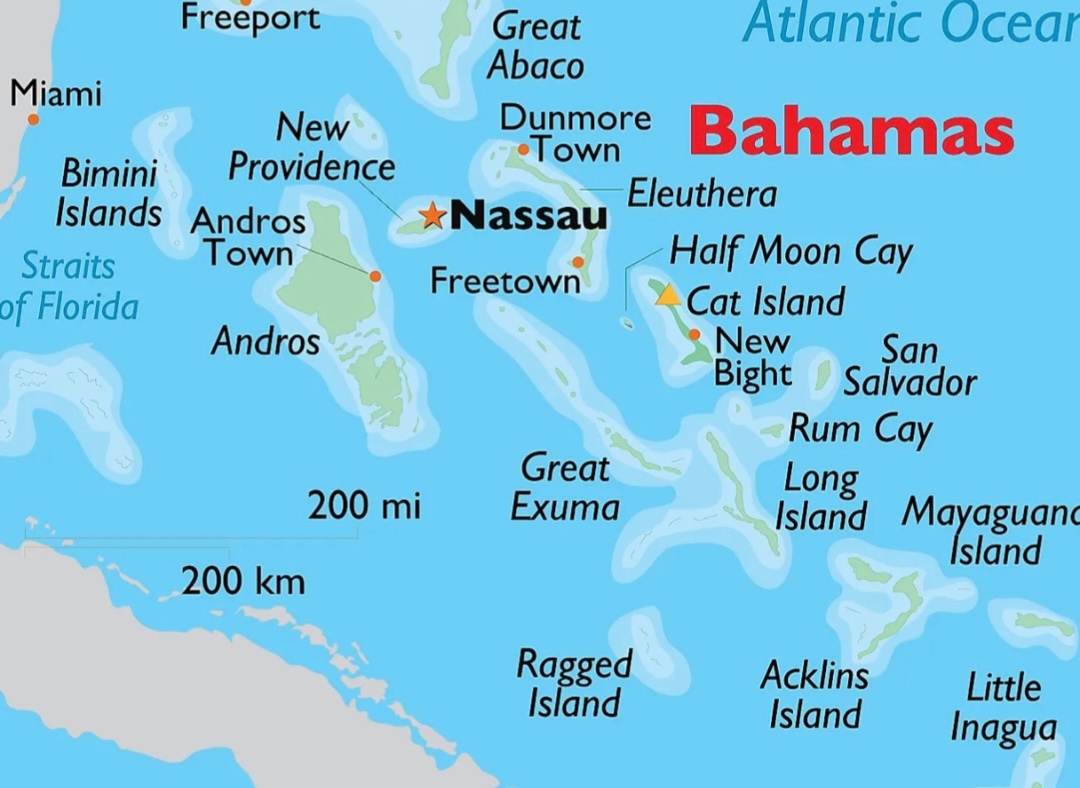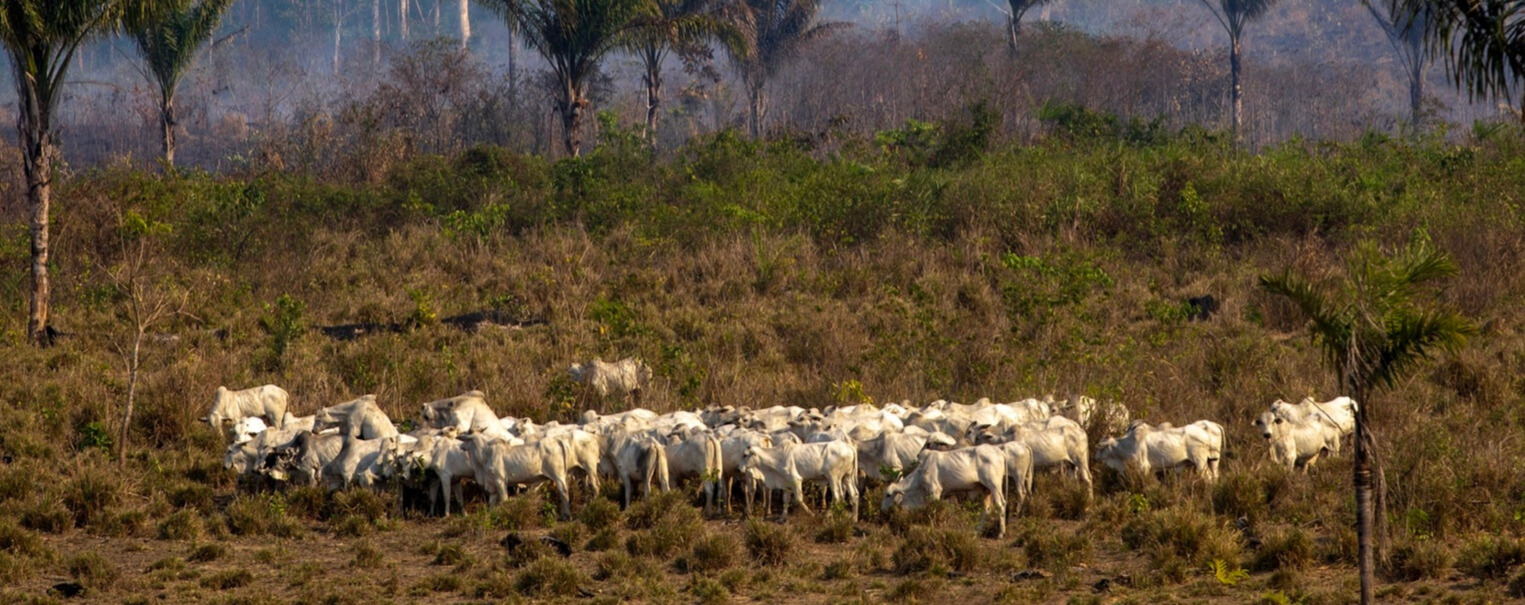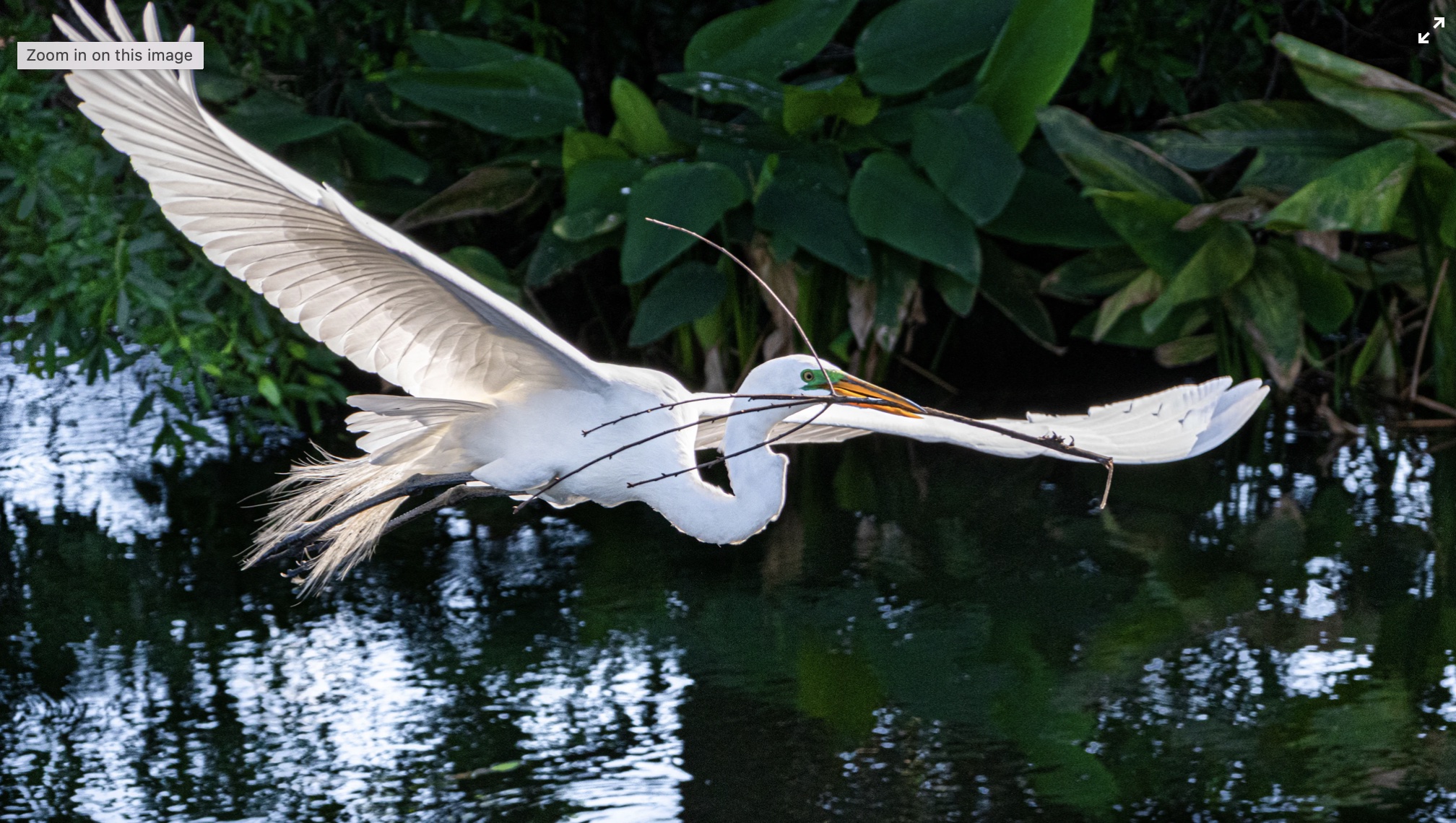Tiger Sharks that Roam the Bahamas’ Seagrass Meadows on the Sea Floor are Fitted with Video Cameras that Help Marine Scientists Evaluate the Extent and Health of the Meadows. The Bahama Islands Have Some of the World’s Largest Seagrass Meadows an Important Biome for Rich and Abundant Marine Life and also for Undersea Storage of Vast Amounts of Carbon Dioxide.
Tiger sharks are common in the Bahama Islands. They are the top apex predator and are often 10 to 14 feet in length and can grow to over 20 feet and weigh 2,000 lbs. They have a distinctive stripped pattern that runs along their back and sides, like a tiger. They are the most aggressive and dangerous of all the species of sharks in the Bahamas’ waters. They eat fish, seabirds, turtles, dolphin, and other sharks. Tiger sharks have been fitted by marine reachers with cameras and GPS monitors to help determine the extent and condition of vast seagrass meadows that cover much of the sea floor on the large Bahama Banks the shallow bodies of water that lie between the islands
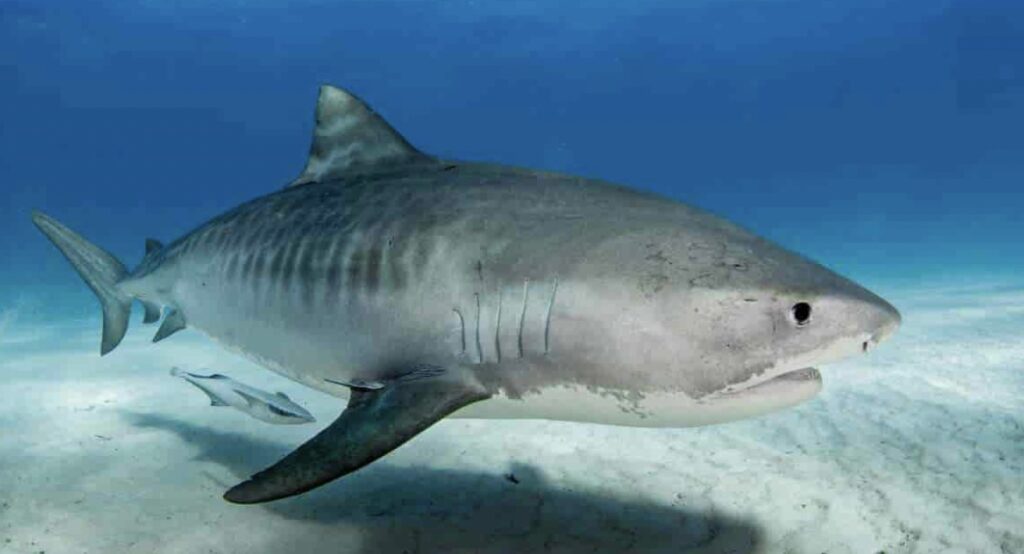
Tiger sharks constantly roam the shallow seagrass meadows, their main habitat in search of prey often patrolling in packs and swim an average of 11 kilometers a day. The Bahamas contains some of the largest seagrass meadows in the world, an important ecosystem that is home to abundant marine species including turtles, grouper, conch, rays, octopus, angelfish, flounder, starfish, and other varieties of sharks including hammerheads, nurse sharks, lemon sharks, Caribbean reef sharks, silky sharks, and the oceanic white tip shark.
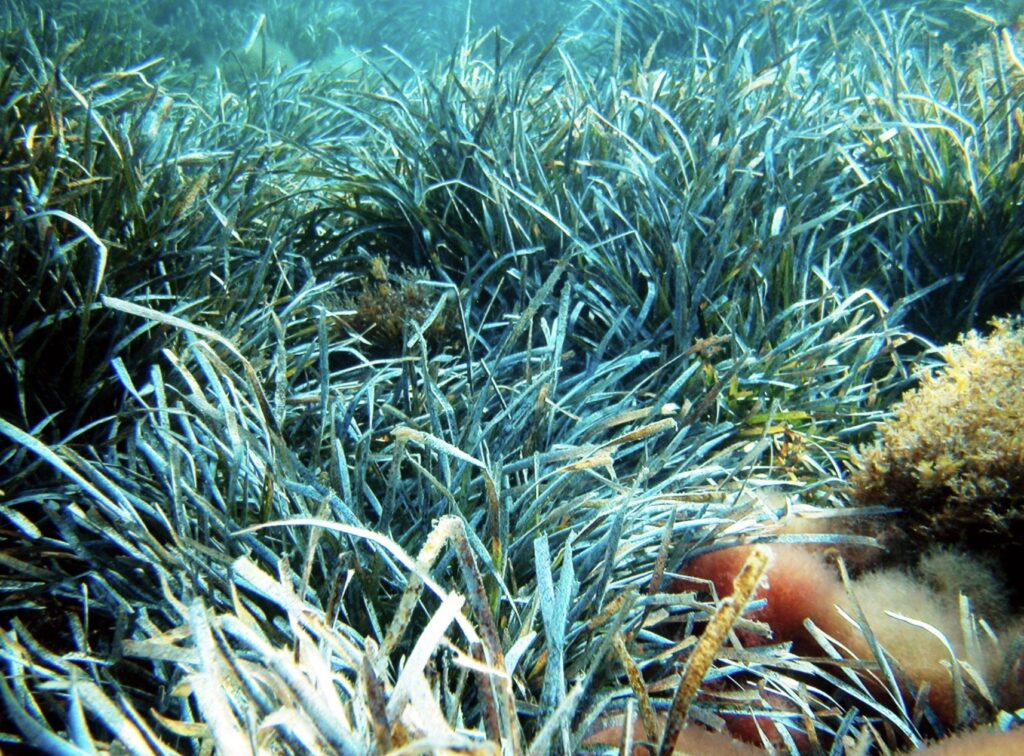
The undersea meadows also store vast amounts of carbon dioxide, the most prevalent of the greenhouse gases that are dangerously heating the planet. Seagrass meadows are known as a “blue carbon” ecosystem since they are located in the blue oceans not on the dry land. The seagrass meadows are found in most of the world’s oceans on the continental shelfs of all continents except Antarctica. Other important blue carbon ecosystems throughout the world are coastal mangrove forests and intertidal marshes. All blue carbon systems grow along coastal areas
The seagrass, like plants that grow on land, utilize sunlight in the process of photosynthesis, where they absorb carbon dioxide and emit oxygen. The sunlight reaches the seagrass growing on the shallow ocean floor below. The carbon dioxide is stored in the seagrass tissue, roots and the sediment surrounding the roots in the sea floor, where it can remain stored for thousands of years. The seagrass meadows and these other two blue carbon ecosystems, mangroves and tidal marshes are much more efficient in storing carbon than land plants.
Assessing the extent of seagrass on the Bahamas’ seafloor from instruments on aircraft flying just above the sea, has been difficult because the dominant seagrass species, Halophila has a canopy that is short, and sparse and is partially covered by oolitic sand. It is overlain by phytoplankton and macroalgae that float in the water above the seagrass and makes it hard to distinguish what portion seen by the aircraft instruments is actually the seagrass.
Marine researchers from the group, Beneath the Waves, have made over 2,000 SCUBA dives onto the Bahamas’ seagrass meadows to determine their extent and health, but they cover so many square kilometers, its simply impossible to complete that task. The researchers, during their thousands of dives, observed tiger sharks whose main habitat are the meadows. They decided to try to tag the sharks on their dorsal fin, some with GPS trackers to determine the shark’s location and others with 360-degree cameras that shows the seagrass meadows in the shallow, crystal clear Bahamian waters. In all, they tagged about 7 sharks. The tags are harmless to the sharks.
Tiger sharks attack of humans is extremely rare, and likely the result of murky water or mistaken identity, perceiving humans as marine prey.
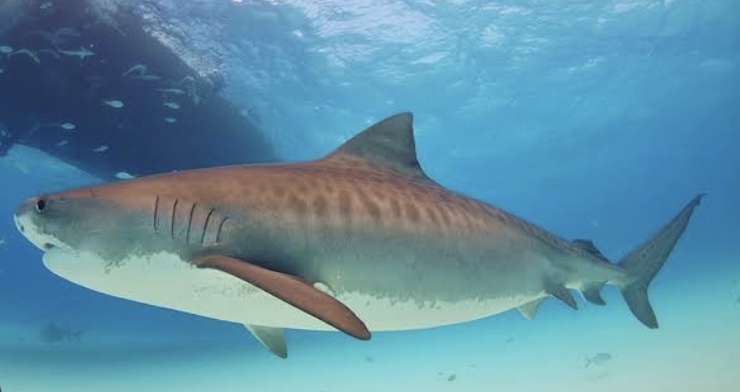
Since the project began in 2016 through 2020, the tagged sharks swam over 4,000 km across the meadows helping the marine researchers to map it.
The Bahamas’ shallow seagrass meadows are located in the Great Bahama Bank that surrounds Andros Island, the country’s largest island, and the Little Bahama Bank, that lies north of Grand Bahama Island, the location of Freeport that is about 50 miles east of the West Palm Beach, and the Bank extends eastward to Great Abaco. The meadows are at an average depth of only 10 meters (30 feet), in some of the clearest waters in the world, and have been favored by divers who explore the Bahamas’ spectacular reefs and meadows.
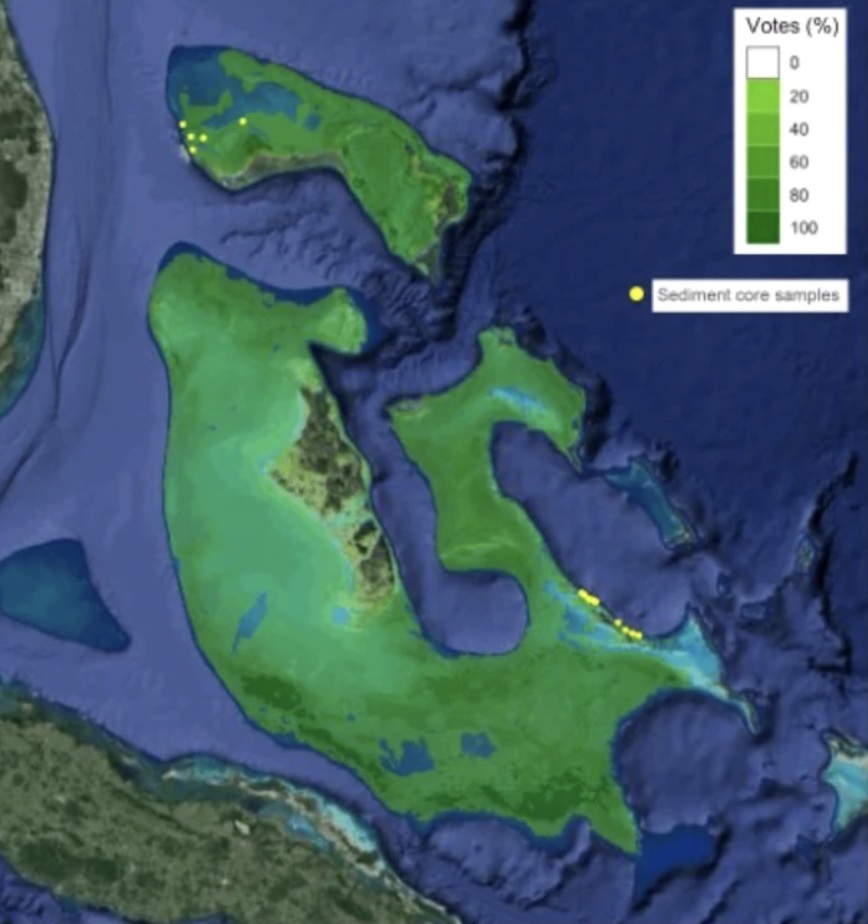
This author grew up in Miami and spent much of his youth in the Bahamas with his family and over the years has cruised in his sailboat to almost all of the of the major islands in the Bahamas, and has dived on its many spectacular coral reefs and seagrass meadows.
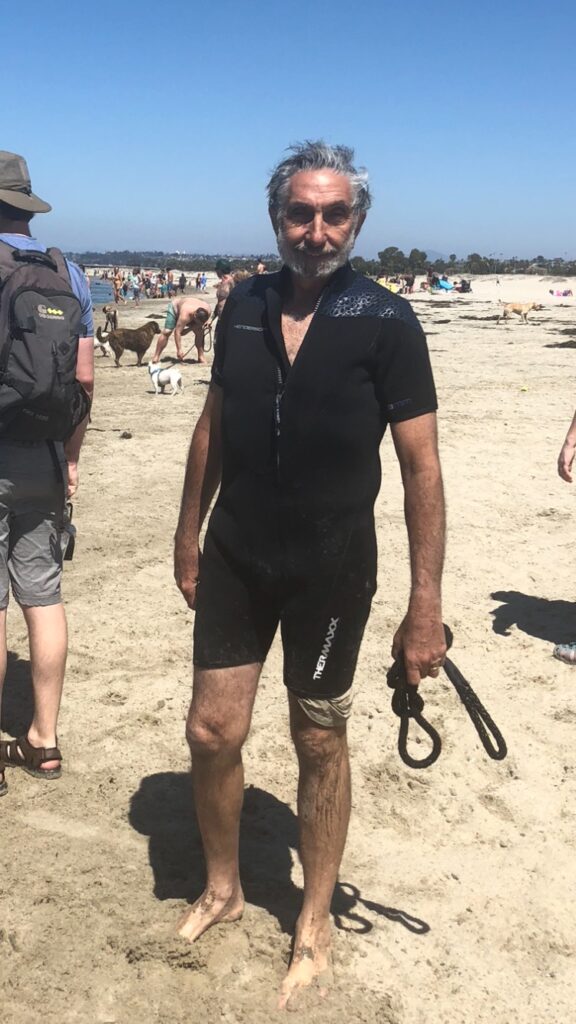
The Bahamas is an archipelago of 700 scattered islands and lots of other small cays in the subtropical south Atlantic, with Bimini, the closest to Florida, just 48 miles east of Miami across the Gulf Stream. It’s about a 10-to-12-hour sail from Florida to Bimini. I usually began my voyage from the Florida Coast early in the morning and reached the Bahamas before sunset. The Bahamas range over 800 miles from Grand Bahama and Abaco in the north to Inagua in the south that lies just off the coast of Cuba. About 30 of the Bahama islands are inhabited, with Nassau, the country’s capitol, located on New Providence Island lying at the north- central part of the archipelago with about 274,000 or 68% of the country’s total population of 404,000 living in Nassau. Other large islands and chains that are popular for cruising are the Exuma chain, Eleuthera and the Abacos and I have cruised them all in my sailboat.
Over 90 percent of Bahamians are black, and they are descendants of the transplant of slaves from North America, during the American Revolution against England in the late 1700s when loyalists who remained true to the English Crown fled to the Bahamas, then a British colony, with their slaves. The move was unsuccessful for the slave owners since the Bahamas does not have large expanses of fertile land, necessary for large plantations and many returned to North America. The black slaves remained, and now free, learned to eke out a living by fishing, boat building, sponging, growing crops in the soil filled potholes in the limestone ground, and wrecking which is salvaging ships and their cargoes that wrecked on the many shallow reefs surrounding the island.
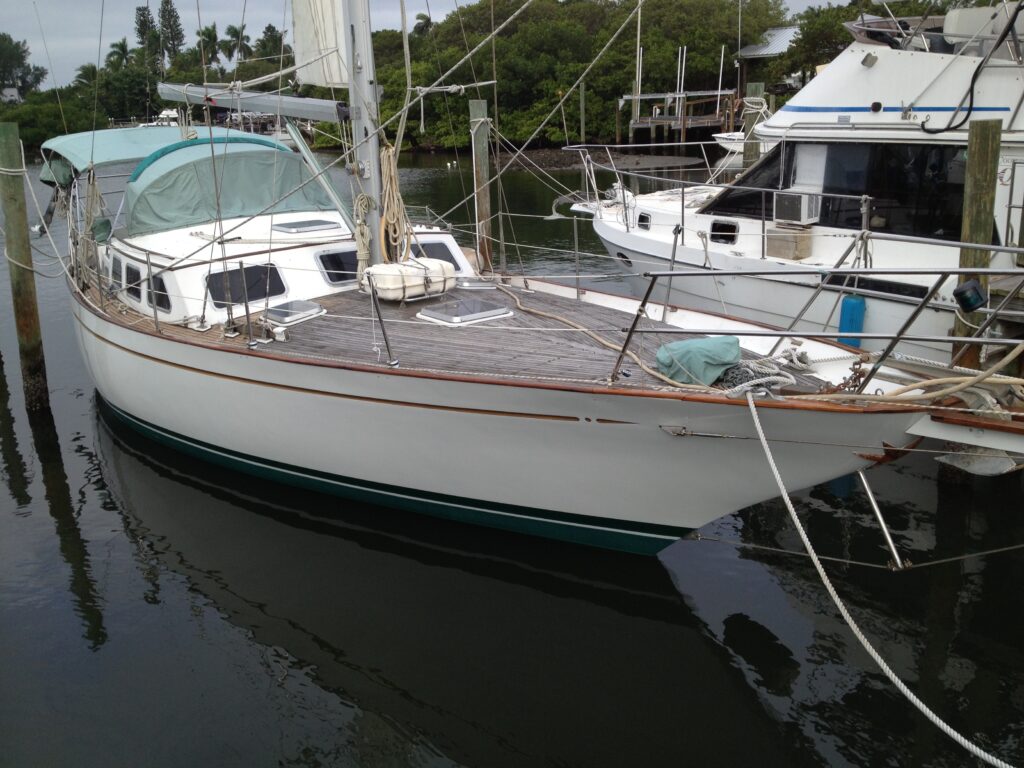
Brent sails to Man o War Cay Abacos
The name, Bahamas derives from “baha mar” or shallow sea in Spanish. Most of the Bahamas shallow seagrass meadows grow on substrate, carbonate sand beneath crystal clear water with abundant penetrating sunlight and warm ocean temperatures that are ideal conditions for seagrass.
The Bahamas seagrass meadows may be the largest seagrass ecosystem in the world, 112,537 sq. km., and covering 83% of the Bahama Banks and measure half the size of Florida.
Seagrass is what is known as a carbon sink, that which stores carbon rather than emit it into the atmosphere. Other carbon sinks are plants on land, especial boreal forests in colder regions and tropical forests. They store the carbon in their plant tissue through photosynthesis and in their roots and surrounding soil. When soil is plowed, the carbon is released, and it becomes a carbon source. When forests are burned, they change from a carbon sink to a carbon source. In the oceans, the seawater absorbs a full 30 % of the excess carbon produced by human activity. But as the oceans absorb more carbon, they become acidic that can inhibit certain crustaceous marine organisms to form shells, such as lobsters, clams and plankton.
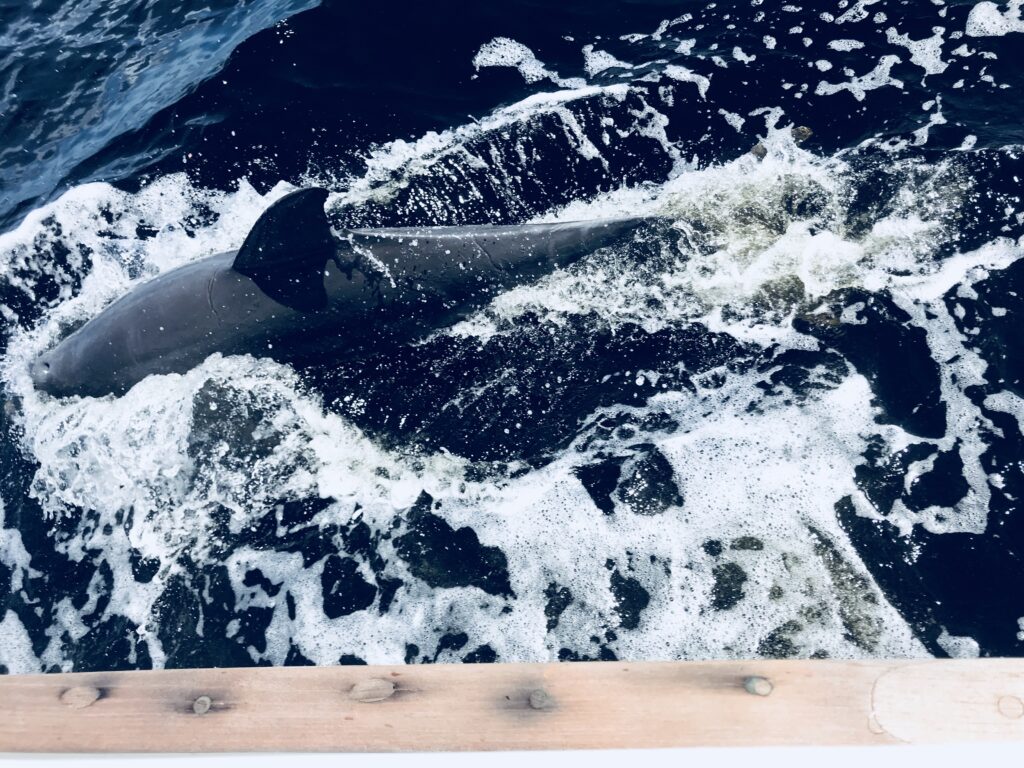
A porpoise greets us by swimming alongside my sailboat
Seagrass meadows, as a blue carbon ecosystem in the oceans, through photosynthesis are a very efficient carbon storing system. They are called the carbon removal superstars as they absorb carbon 30 times faster than land-based forests. And as a carbon sink, the sediment below the ocean floor that surrounds the roots of the seagrass can store the carbon for thousands of years. The blue carbon ecosystems, including seagrass, mangroves, and tidal marshes, cover only 5 % of the world’s ocean’s seafloor, yet they account for an impressive 50% of all carbon buried in marine sediments.
Carbon dioxide is the most prevalent of the greenhouse gases that dangerously warm the planet. Carbon is emitted from the burning of fossil fuels in transportation, industry, the generation of electricity and in deforestation and farming, the latter contributing about 10 percent of carbon emissions. In preindustrial times, in the late 1700s, there was 280 parts per million (ppm) of carbon in the atmosphere, and by 1970 there was 325 ppm, and today we have reached a dangerous 425 ppm. The earth has warmed 1.4 degrees Celsius, or about 2.5-degrees Fahrenheit from the emission greenhouse gases from human activity, and climate scientists tell us that now we have to drastically reduce greenhouse gases and by the 2050 be carbon neutral to prevent the Earth to warming above 2 degrees C, or 3.6 degrees F to avoid catastrophic changes to our planet.
That’s why marine scientists’ study of carbon sinks including the vast seagrass meadows on the Bahama Banks, has become so important.
There is a lot of discussion about how carbon capture and storage will save us from the increasing amount of carbon dioxide in the atmosphere. But despite carefully devised misinformation campaigns by the big oil companies, that want to keep drilling and making profits of billions from polluting the Earth, the technology for large scale carbon capture and storage simply does not exist.
That’s why preserving and restoring natural systems on land and in the sea like blue carbon that mitigate climate change is so important.
Because it is challenging to determine what portion of a sea floor is covered with seagrass, many portions of the world’s seagrass meadows remain unmapped.
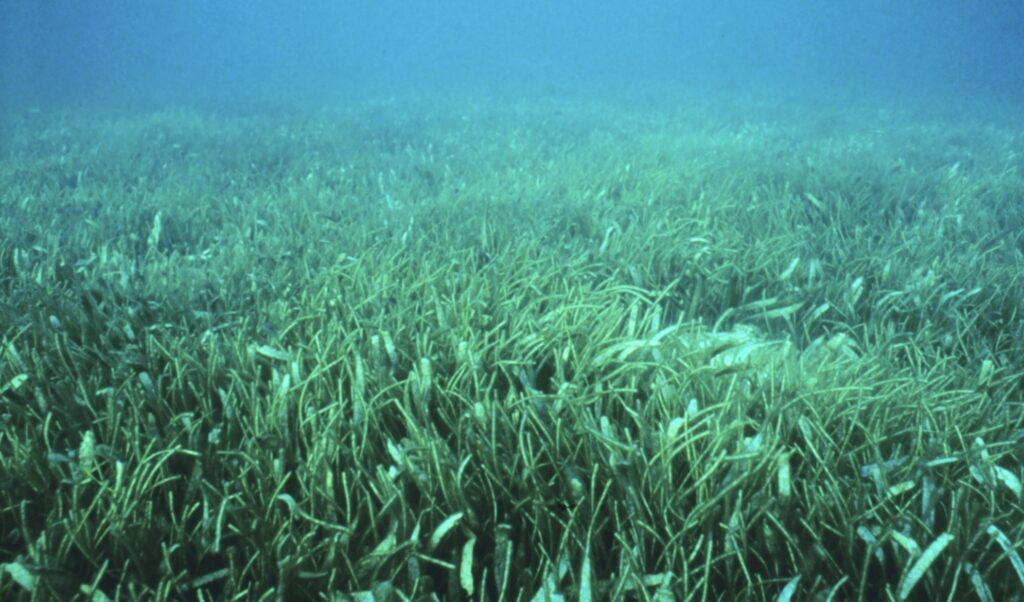
The seagrass meadows worldwide are disappearing at a rate of 7 percent a year. The UK has lost 39% of its seagrass meadows since the 1980s. The best way to protect seagrass meadows is for governments to create preservation zones. There has been some success replanting seagrass. The Chesapeake Bay, the largest estuary in the US and historically one of the richest ecosystems in the world, known for abundant fish and crabs, saw the area of its seagrass meadows sharply decline due to deteriorating water quality. As the water quality has improved through conservation efforts, seagrass is returning and a program to rebuild meadows from 35,000 to 185,0000 acres is halfway accomplished
The Mediterranean Sea has a different variety of seagrass meadows, called, Posidonia, and like the seagrass meadows in the Bahamas, its where fish lay eggs, and juvenile species of fish and crabs can find refuge from predators. More than 500 species of marine animals live in the seabed, and they provide food for fish, crustaceans and mollusks and are the most productive fishing areas in the Med. Besides coastal development, pollution and increased temperatures, the seabeds in the Med are under threat from commercial fishing boats that bottom trawl, dragging nets with large weights that tear up and destroy the beds on the sea floor. The seabeds in the Med have already lost a full 34 % of their total area. (Please see my website, the climate guru.org, report about the Med Sea that I wrote last year after spending a month and a half visiting many islands in Greece and interviewing marine scientists there).
Australia has one of the biggest sea grass meadows in the world, that lies in the huge lagoon between the Australian mainland and the Great Barrier Reef, covering 40,000 sq. km. It has been overlooked since most attention was paid to the deteriorating state of the reef, but in recent years it is being discovered and studied, with its importance as a blue carbon sink fully recognized.
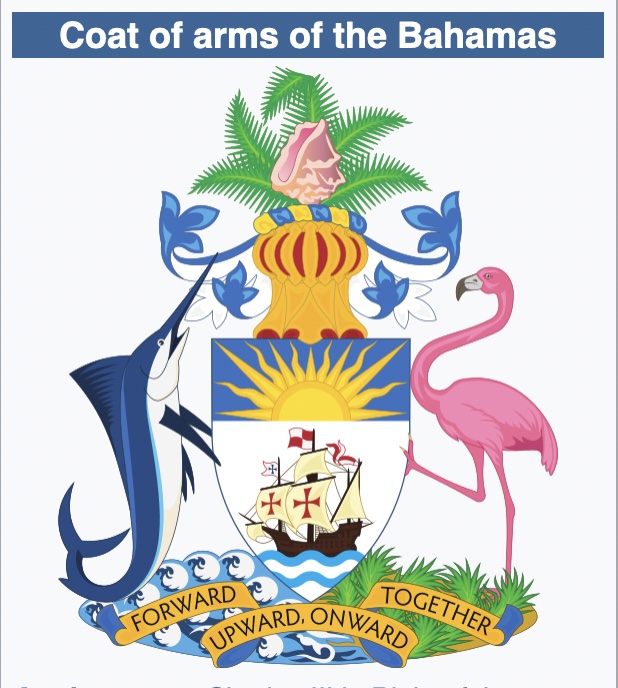
Coastal salt marshes and mangroves are under pressure from coastal development all over the world and runoff from coastal industry and farming. One industry that is especially destructive is shrimp farming, mostly in Southeast Asia, that cuts down coastal mangrove forests to set up the farms.

The Bahamas Prime Minister, Phillip Davis, recently announced at the United Nations, the importance of the country’s vast seagrass meadows and mangrove forests and the government’s measures to protect this valuable natural resource.
